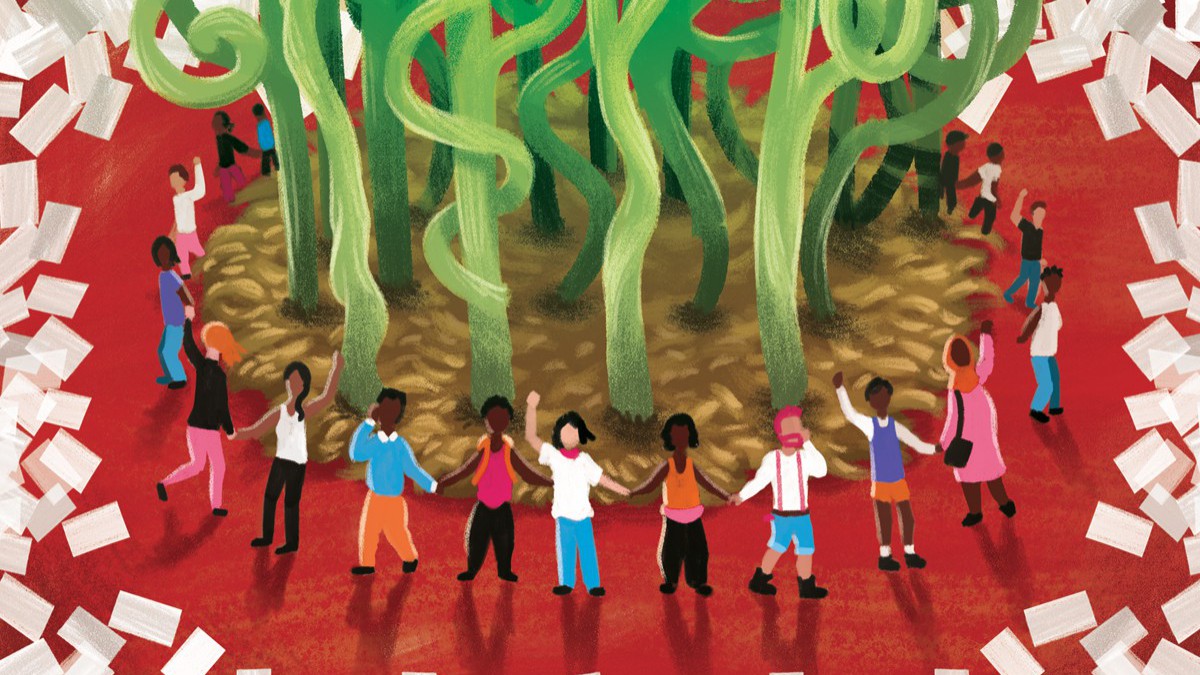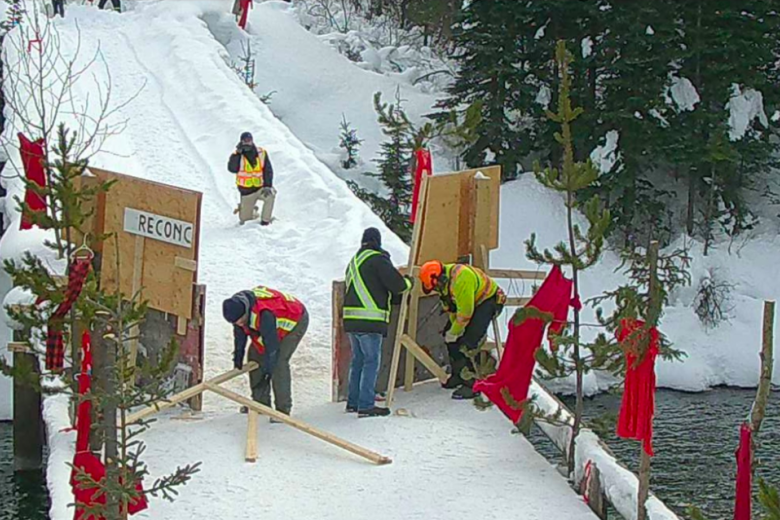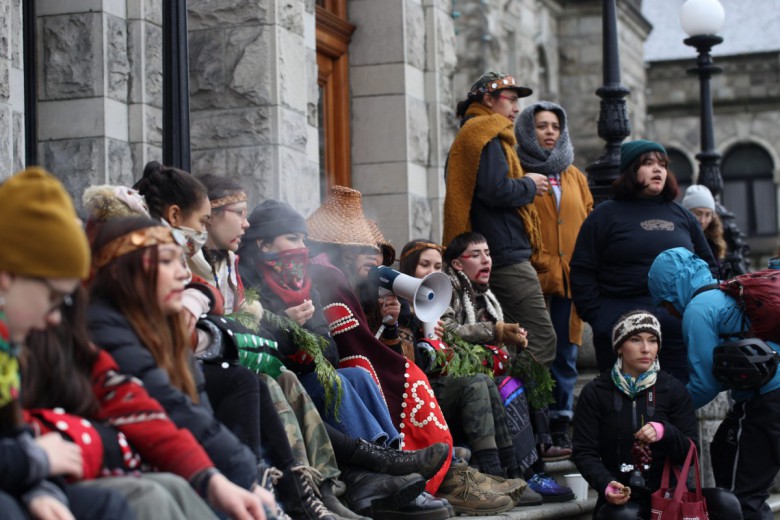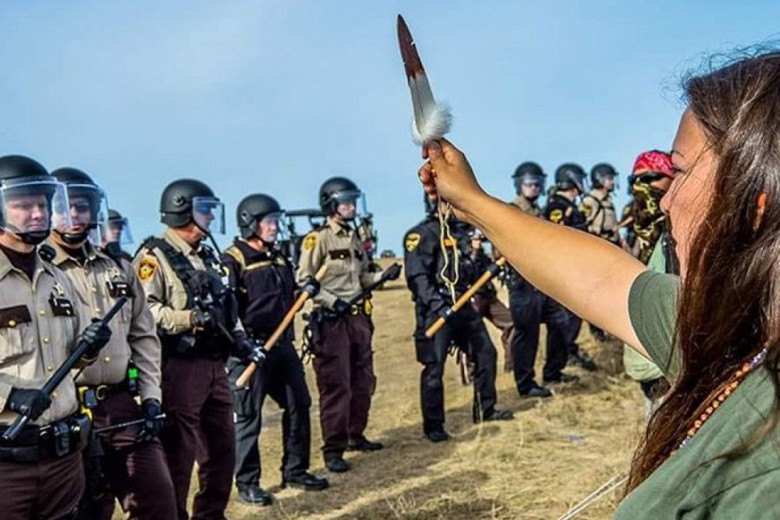For two months during the summer of 2017, a peaceful blockade successfully halted the clear-cutting of a large, beloved aspen forest in south Winnipeg.
Everyone had different reasons for showing up. Some were anti-colonial activists fighting for recognition of Métis and First Nations sovereignty over ancestral lands; others wanted to protect a forest in which they had hiked, skied, or walked their dogs for decades. Still other local residents worried about the destruction of rare habitat for birds, plants, and animals, as well as the increased threat of flooding due to the loss of wetlands. Some participated in the blockade on a near-daily basis, while others just stopped by once with food, water, or support.
But the objective was clear: to halt clear-cutting until proper consultation had been done, and to potentially pressure the city to expropriate the land and return it to public hands.
It had been a decade-long fight, starting in 2009 with a controversial land swap between the city and Gem Equities – owned by developer Andrew Marquess – that did not involve formal property assessments, inspections, or competitive tendering. The ad hoc Parker Wetlands Conservation Committee had encouraged local community members to voice opposition to the project at town halls and in letters to city councillors. None of it had worked. After the contracted mulcher destroyed about a third of the forest in July, many concerned citizens felt they were left with only one choice: to literally stand in front of the machine and refuse to leave until the developer and the city properly consulted with the Manitoba Metis Federation and other Indigenous groups, environmentalists, and community members.
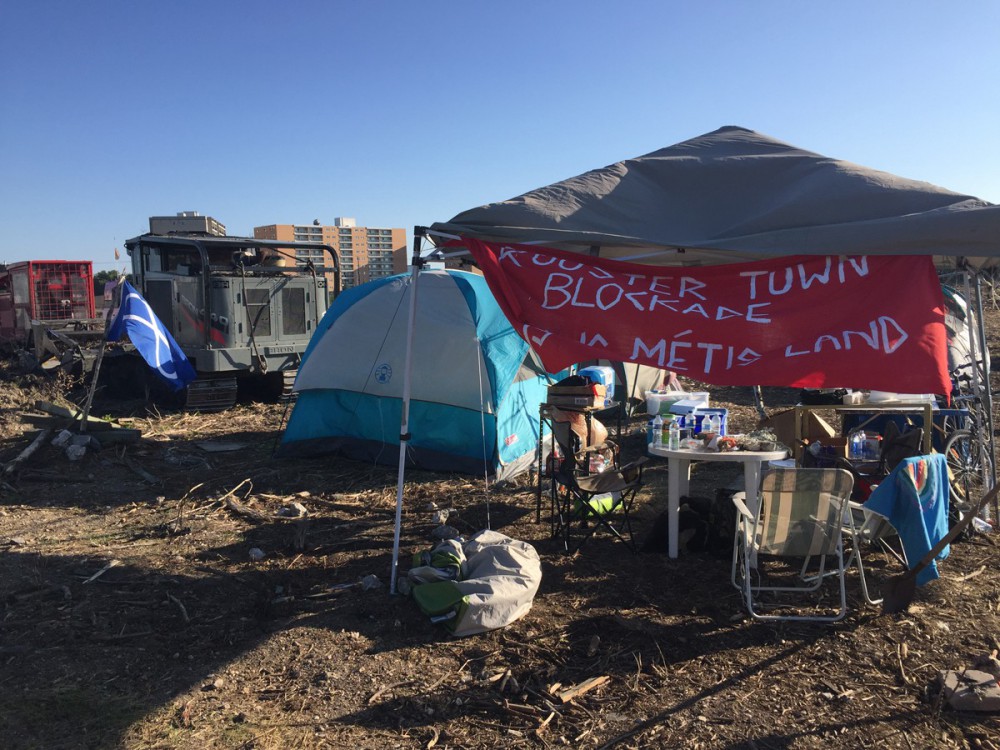
The Rooster Town Blockade, as it came to be known, was named after a nearby Métis “shanty town” that had been demolished in 1959 to build a mall and a high school. At its peak in the 1930s, Rooster Town was home to several hundred mostly Métis residents, who had originally moved to Winnipeg in the wake of colonial land theft and broken promises. While some families elected to leave when the City of Winnipeg offered meagre sums of money, the 14 remaining families were eventually evicted from Rooster Town into slums in the city’s core, and their houses burned. Many remnants of their lives lingered in the forest: parts of a house, arrowheads, bison-skinning tools, ceremonial structures.
But in mid-September, after two months of increasing pressure – which included round-the-clock surveillance, a private security firm to deter entrance, and noisy diesel-powered floodlights at night that prevented activists from sleeping – the Rooster Town Blockade fell due to an approved court injunction.
Many remnants of their lives lingered in the forest: parts of a house, arrowheads, bison-skinning tools, ceremonial structures.
Since then, contractors have destroyed most of the remaining forest and are preparing to build suburban homes and apartment buildings on the land.
It’s not the end, however.
The two numbered companies owned by Marquess are now suing 49 people – of which I am one – for damages associated with alleged participation in the blockade. The plaintiff’s lawyer has suggested that pursued damages may range anywhere between $500,000 and “tens of millions of dollars.” Needless to say, the haphazard group of defendants – which includes people who never even set foot on the property – isn’t exactly in a position to pay.
The lawsuit itself is expected to stretch out for at least half a decade and cost defendants up to $100,000 in legal fees.
There’s perhaps even bigger reason for concern. For many local activists, this case represents the first potential example of a Strategic Lawsuit Against Public Participation (SLAPP) in Manitoba, and potentially all of the Prairies.
Normand Landry, author of Threatening Democracy: SLAPPs and the Judicial Repression of Public Discourse told me in an interview that there are two main indicators of a SLAPP: an intention to intimidate and exhaust the individuals being sued rather than necessarily win a legal battle, and a particular type of conduct that includes demanding an amount of money that is “totally untenable” and using high-profile lawyers. But outside of a jurisdiction with anti-SLAPP legislation, they’re impossible to formally identify.
“The logic of the SLAPPer is really to get you into the court system and then exhaust your capacity to pay and deal with the legal process over a long period, while sending a clear message to the rest of the community that [they] could also be sued,” Landry explains.
For many local activists, this case represents the first potential example of a Strategic Lawsuit Against Public Participation (SLAPP) in Manitoba, and potentially all of the Prairies.
“They create a chilling impact on public participation,” says Ramani Nadarajah, counsel at the Canadian Environmental Law Association, about SLAPP suits. “If a SLAPP suit is launched, the impact is not just on the individual who sued, but [it] also has a chilling impact on others as well, who fear they could be sued for speaking out on the same issue or similar issues.”
Unless there’s a specific decision by a judge or a defendant claiming that a lawsuit is a SLAPP, they go largely unnoticed, clouding our understanding of the scope and number of SLAPP-like cases in Canada. Without this information, it’s tough to make a case for the importance of anti-SLAPP legislation – it’s a Catch-22.
Staring down a SLAPP
I was shopping for cat toys in Dollarama in late September when I got word that we were going to be sued.
For me, there was near-immediate shock, denial, and ironic detachment: I was convinced that this was just a quick scare tactic that wouldn’t be followed through. Then came the realization that it wasn’t a joke. A prominent and well-connected developer had retained one of the top civil litigators in the city to come after almost 50 people from completely diverse backgrounds and alleged levels of involvement in the action. When I got home, a quick search of the Manitoba Court Registry revealed that Marquess had been involved in dozens of lawsuits in the past decade, both as defendant and plaintiff, suggesting he knows far more about the system than we do.
Hot on the heels of that realization came overwhelming anxiety, borderline panic attacks, and social withdrawal, all brought on by the knowledge that the next years of my life would be consumed in an incredibly costly, drawn-out, and intimidating legal battle.
Jules Hardy, a fellow defendant in the lawsuit, tells me they were feeling “pretty bleak” about the lawsuit. “I was too overwhelmed and didn’t know how to proceed, and that left me feeling extremely depressed and even suicidal,” they wrote to me. “I still believe and stand behind Rooster Town 100 per cent, but it was disappointing to see our efforts to preserve the land crumble – and even more disappointing knowing that people with power (money) will usually win.”

In 2012, Dylan Powell, an animal rights activist and the co-founder of Marineland Animal Defense, was sued for $1.5 million by Marineland in Niagara Falls. He tells me in an interview that the process made him “so much more suspicious and paranoid” due to fears of infiltration, and that his willingness to participate in any issue he feels passionate about has been dampened.
“Now, the decision-making process that goes in beforehand is a lot different,” he says. “My ability to just openly have faith and trust other people is different. I don’t like it, but it’s something that happens naturally through the process.”
Marquess had been involved in dozens of lawsuits in the past decade, suggesting he knows far more about the system than we do.
We can’t assess Marquess’ motivations in suing us – especially given that the blockade was removed immediately following the approved injunction and the defendants haven’t kept up any sustained public criticism since. In fact, SLAPPs tend to be used by a plaintiff to shut down ongoing criticism, whether it involves showing up to a municipal board to argue about the environmental impacts of a development or protesting outside a site.
But that could arguably be the whole point – most of us have retreated from publicly expressing any sort of opposition to the development, and certainly wouldn’t dare to return to the site or attempt to obstruct Marquess’ developments in the future.
SLAPPs in Canada
Only two provinces in Canada have explicit anti-SLAPP legislation: Ontario and Quebec.
In the United States, 28 states have introduced anti-SLAPP legislation. British Columbia briefly had its own version in 2001, but it was overturned when the provincial Liberals were elected a few months later (a group of 15 legal experts recently called on the newly elected NDP government to restore it). Attempts by New Brunswick and Nova Scotia to adopt similar protections also failed.
The specifics of the legislation vary by jurisdiction. Importantly, they can provide the right to move for early dismissal of a case based on the judge’s discretion. Ontario’s legislation, introduced in 2014, could see a case dismissed within months and damages awarded to the defendant if a lawsuit is deemed a SLAPP.
But that could arguably be the whole point – most of us have retreated from publicly expressing any sort of opposition to the development.
As chronicled by Landry, the language of SLAPPs first entered Canada’s consciousness with the 1995 lawsuit by paper company Daishowa Inc. against Toronto’s Friends of the Lubicon-, which had led a boycott of the company’s products due to logging on ancestral Cree territory in northern Alberta. The case dragged on for years and was eventually settled out of court.
In 1999, a B.C. Supreme Court judge explicitly identified a lawsuit that had been filed by a developer against a critical community group as a SLAPP.
But it wasn’t until 2009 that a Canadian province received a permanent anti-SLAPP bill, with Quebec’s legislation introduced after three years of agitation that followed a high-profile lawsuit by a metal recycling company against critics of a proposed car shredder plant. The resulting movement that advocated for anti-SLAPP legislation kicked off in October 2006 and involved over 50 organizations, including the province’s three biggest unions, and a series of creative protests – including activists literally gagging themselves in public locations to show how SLAPPs can stifle public debate.
A similar process happened in Ontario following two major SLAPP-like cases: Resolute Forest Products’ lawsuit for $7 million against Greenpeace Canada and Marineland’s litigation against Dylan Powell. Powell says that activists in Ontario piggybacked off the success in Quebec and pointed to that province as an example of what could be done, recalling that Greenpeace rallied support from 80 public interest organizations across the U.S. and Canada.
For activists hoping to introduce anti-SLAPP legislation in their province, Powell recommends they “broaden the issue.” “[It’s] not just about ‘Hey, this is unfair to people who are opposing the development,’ but ‘Hey, this is wildly applicable if you have an opinion that you would express publicly in opposition to any legal business – [because] you could be sued for $5 million and be ground into dust before you even hit trial, so don’t you think we should do something about that?’”
“You could be sued for $5 million and be ground into dust before you even hit trial, so don’t you think we should do something about that?”
Many SLAPP-like suits tend to be related to environmental issues, with recent examples including Kinder Morgan’s lawsuit against five Burnaby residents opposing the proposed Trans Mountain pipeline and Taseko Mines’ case against the Wilderness Committee for their criticism of Taseko’s proposed open-pit mine.
Between the state and a hard place
The conversation gets even more complicated when the activists are Indigenous land defenders and allies who attempt to directly undermine the very assumptions of state power and private property, like some folks who participated in the Rooster Town Blockade.
Yale Belanger, professor of political science and co-editor of 2015’s Blockades or Breakthroughs? Aboriginal Peoples Confront the Canadian State, emphasized in an interview that while actions like blockades of land development may appear to be conflicts with individual developers or companies, they ultimately trace back to the overarching legal framework that led to and maintains Indigenous dispossession.
“You’ve got an ideology of private property as right and just, and a state that has embraced those ideas in law,” he says. “If you’ve got an alternative perspective on what land means, you’re immediately confronting a bureaucratic machine that doesn’t believe that. And if you take action to reclaim or reoccupy land, the state is going to come down on you, because you’re violating the basic tenets of who we are from a national perspective.”
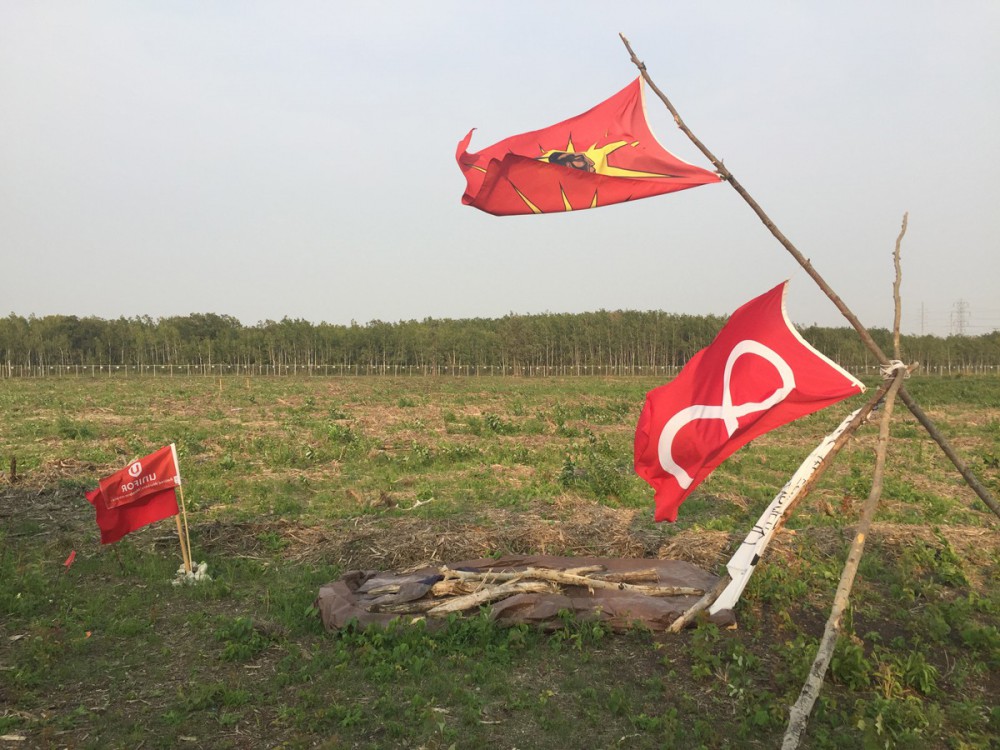
Anti-SLAPP legislation would be hugely helpful in some cases. But in other cases, it may force Indigenous land defenders to appeal to a state that was founded on their extermination, in the language of colonial law.
In addition, it requires petitioning the very same states that have conducted vicious crackdowns on protesters in the past, including at Toronto’s G20 summit in 2010, Quebec City’s Summit of the Americas in 2001, and Clayoquot Sound’s War in the Woods in 1993.
Not without a fight
Anti-SLAPP legislation is clearly not a universal solution, given the complex issues of ongoing colonialism and state repression. But at the very least, it would give activists the language to catalogue the ways that lawsuits can be used by private actors to silence critics, and provide the means to request early dismissal if they do end up on the wrong end of one.
“If you don’t have [anti-]SLAPP legislation and the ability to bring motions forward to remove the suit, the system assumes that no one would willingly file a civil claim without the intention of going to trial,” Powell explains. “That’s the main problem of the system. It just assumes that would be absurd and someone wouldn’t do it. But they do it, and it’s extremely effective once you get into the later stages.”
In his experience, it’s crucial for activists to proactively lobby for anti-SLAPP legislation where it doesn’t exist, at the same time as they face an actual lawsuit that has SLAPP-like qualities.
“If you take action to reclaim or reoccupy land, the state is going to come down on you, because you’re violating the basic tenets of who we are from a national perspective.”
Landry’s book offers “an anti-SLAPP survival guide” – key techniques that activists should deploy in the face of a SLAPP.
“The counter-strategy is to have a clear and loud voice in the public sphere […] shaming the SLAPPing party by building up a campaign, building up support, reaching [out] to MPs, reaching [out] to media outlets, trying to have pro-bono lawyers working,” he says an interview. “It is a matter of resilience and movement capacity building. The higher the public relations cost for the SLAPPers, the higher the probability that the case will be dropped sooner rather than later.”
Thanks to social media, Rooster Town Blockade defendants have received incredible financial support from across the country, meaning that we could pay the $10,000 retainer for our lawyers without any low-income defendants having to pay out of pocket. It may be a challenge to maintain the momentum of donations and overall visibility in the months and years to come, but between 49 defendants, we are able to draw on an incredible variety of skills, contacts, and experiences.
This situation is about far more than one developer, though. We’re facing off against the forces of colonialism and private property rights that are upheld by the Canadian legal system – forces that are obviously present through the Prairies and will enthusiastically punish opponents using a wide range of means.
But we’re not going down without a fight.


